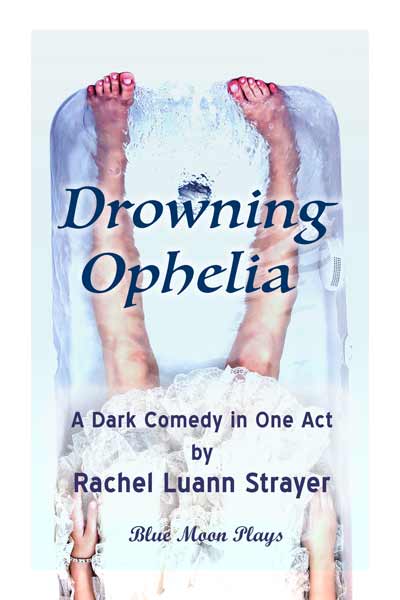Drowning Ophelia: A Dark Comedy
Rachel Luann Strayer’s Drowning Ophelia was first produced over a decade ago in San Francisco by the Repurposed Theater Company. Since then, it has been performed across the U.S. and Canada. The most recent productions were this past year in Cheney, Washington and Manitoba, Canada. Reviews of the play are consistently positive, citing Strayer’s work as “witty, poetic, and psychologically true” and a “present day drama that explores timeless truths.”
An April 2021 production of the play by the University of Indianapolis earned Drowning Ophelia seven national awards from the Kennedy Center American College Theater Festival. These awards included production design, lighting design, and scenic design as well as movement direction and production and ensemble performance. Other college productions have been undertaken by the University of Idaho, University of Toronto, and Acadia University in Nova Scotia.
The play’s unique staging, its complicated characterization, and its confrontation of abuse by a family member provides the type of production and directing challenge theater professionals thrive on. This is why the play continues to be a favorite for college theater productions and smaller professional companies. It is also a story that insists on being told.
Drowning Ophelia centers on Jane, a troubled young woman, who lives in a detached reality, as exhibited by her interactions with Edmund, a person she pays weekly to come to her home and talk with her. However, Edmund must come in a chosen period costume and their dialogue ensues in the vernacular and affectations of the period. Jane’s foil throughout the play is a younger woman who inhabits her bathtub. The young woman, never identified by name, is the Ophelia of the play’s title. Shakespeare fans will recognize the name as the prospective wife of Hamlet whose treatment and rejection by him reduced her to madness and her eventual drowning. Ophelia in the tub is Jane’s younger self, who she does not want to acknowledge because she is not real, she is in Jane’s mind.
Ophelia and Jane compete for attention throughout the play. Ophelia, as the embodiment of Jane’s younger self, symbolizes the past abuse haunting Jane. Her abuser was her brother Alex who committed the act when the younger Jane was in the bathtub. Alex appears in the play as an equally complex character who maintains a relationship with Jane while aware of the impact of his past act.
The play grapples with trauma, memory, and grief. Jane abides with her past until she must confront her younger self. Throughout the play she is fighting the guilt and pressing madness of her situation. Drowning Ophelia is a powerful play that has become a popular choice for staging by professional production companies and college theater programs.
Strayer is a multi-talented artist whose work extends beyond playwright to include director, screenwriter, novelist, actor, and educator. As a graduate of the Wilkes University MFA program, Strayer has taught theater, playwriting, communications, and American Literature at several regional colleges and universities in northeastern Pennsylvania. Her body of work grows each year, but Drowning Ophelia is her most requested and produced play so far.

Sign up for the latest News , Publications and Special Offers
[MAILCHIMP FORM]

